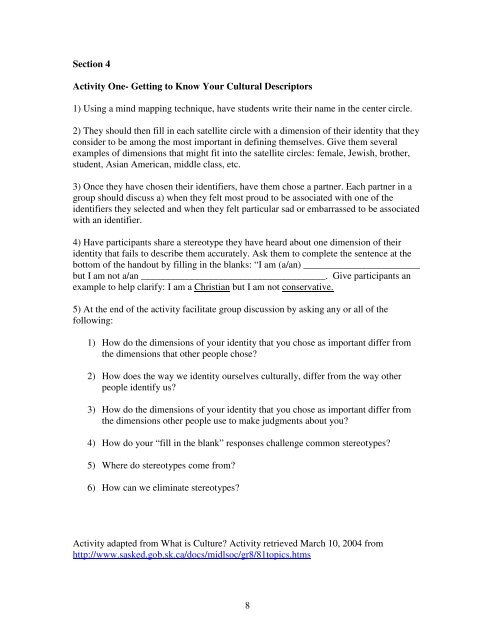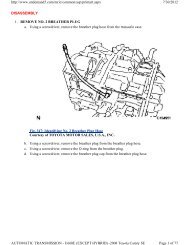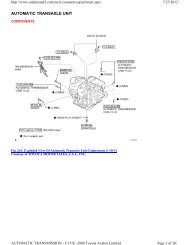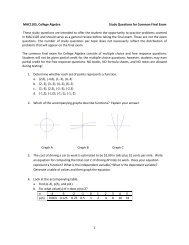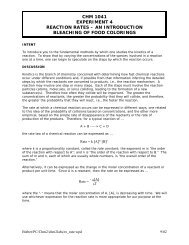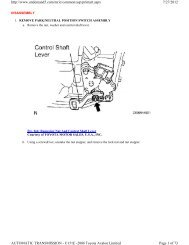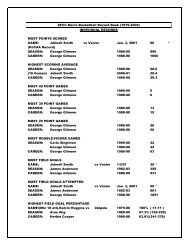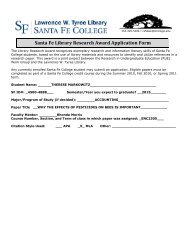Cultural Awareness Learning Module One
Cultural Awareness Learning Module One
Cultural Awareness Learning Module One
You also want an ePaper? Increase the reach of your titles
YUMPU automatically turns print PDFs into web optimized ePapers that Google loves.
Section 4<br />
Activity <strong>One</strong>- Getting to Know Your <strong>Cultural</strong> Descriptors<br />
1) Using a mind mapping technique, have students write their name in the center circle.<br />
2) They should then fill in each satellite circle with a dimension of their identity that they<br />
consider to be among the most important in defining themselves. Give them several<br />
examples of dimensions that might fit into the satellite circles: female, Jewish, brother,<br />
student, Asian American, middle class, etc.<br />
3) Once they have chosen their identifiers, have them chose a partner. Each partner in a<br />
group should discuss a) when they felt most proud to be associated with one of the<br />
identifiers they selected and when they felt particular sad or embarrassed to be associated<br />
with an identifier.<br />
4) Have participants share a stereotype they have heard about one dimension of their<br />
identity that fails to describe them accurately. Ask them to complete the sentence at the<br />
bottom of the handout by filling in the blanks: “I am (a/an) ________________________<br />
but I am not a/an ______________________________________. Give participants an<br />
example to help clarify: I am a Christian but I am not conservative.<br />
5) At the end of the activity facilitate group discussion by asking any or all of the<br />
following:<br />
1) How do the dimensions of your identity that you chose as important differ from<br />
the dimensions that other people chose?<br />
2) How does the way we identity ourselves culturally, differ from the way other<br />
people identify us?<br />
3) How do the dimensions of your identity that you chose as important differ from<br />
the dimensions other people use to make judgments about you?<br />
4) How do your “fill in the blank” responses challenge common stereotypes?<br />
5) Where do stereotypes come from?<br />
6) How can we eliminate stereotypes?<br />
Activity adapted from What is Culture? Activity retrieved March 10, 2004 from<br />
http://www.sasked.gob.sk.ca/docs/midlsoc/gr8/81topics.htms<br />
8


